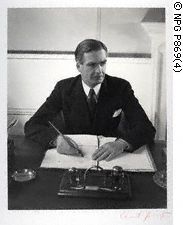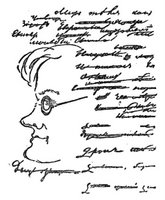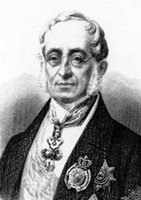Britain's Afghan destiny: A review of Edmund Yorke's 'Playing the Great Game'
The following is a book review of mine which appears in the french history review, 'Cercles', sponsored by the University of Rouen in the February 2013 issue. I have to thank Professor Antoine Capet of Cercles for being so kind as to suggest that I review Dr. Yorke's book.
Playing the Great Game: Britain, War and Politics in Afghanistan since 1839
Edmund Yorke, London: Robert Hale, 2012 Hardcover. 448 p. ISBN: 9780709091967. £30
"Beginning in the late 1990’s, there has reemerged with a vengeance popular and indeed even scholarly interest in the subject of what was known in times past as the ‘great game’, AKA the competition, both real and imagined for power and influence between Tsarist Russia and the British Empire in Central Asia and the upper reaches of the Indian sub-continent. Unfortunately, a good deal of this writing and indeed even ‘scholarship’ leaves much to be desired(1). With anachronistic premises and ahistorical arguments, the concept of the ‘great game’ is one which, it may be argued, obscures more than it enlightens. Reflecting an understandable, but none the less not historically based, instinct to ground the past (19th-century Anglo-Russian diplomatic interaction and competition) in the concerns of the present and recent past. Given this rather less than impressive background, one opens the pages to Edmund Yorke’s book, entitled Playing the Great Game : Britain, War and Politics in Afghanistan since 1839, with some amount of trepidation. Thankfully, in that respect at least, Dr. Yorke eschews most of the substructure of the aforementioned topic except in the most nominal sense, choosing instead to concentrate upon Britain’s ‘four’ Afghan Wars, the last being Britain’s military involvement since 2001 as a junior partner of the United States. Currently a senior lecturer in the Department of War Studies at Sandhurst, Dr. Yorke understands his study as an analysis of the ‘political-military interface within the specific framework of Britain’s four Afghan conflicts’ [10]. With a focus on what is characterized as “the friction or tension generated by all of these wars between the ‘politicals’…and the military establishments”. Lest anyone misunderstand the underlying premises to this study, there is a foreword to Dr. Yorke’s book by no less a personage than Brigadier ‘Ed’ Butler, former SAS officer and circa 2006, one-time Commander in Chief of British forces in Afghanistan. According to Brigadier Butler, the value of Dr. Yorke’s study is that it “highlights the tensions” between the generals on the ground and the politicians in either London or British India. The sub-text being that just as the latest round of British military involvement in Afghanistan has been fraught with tensions between the army and its political leaders, with the former claiming that the policies by the latter have consistently undermined British forces in the field, so we see, as per Dr. Yorke, the same pattern of failures by the politicians in the past, thereby explaining the lack of success of British forces in the three previous Anglo-Afghan Wars. Given this rather topical background to his study, how does Dr. Yorke’s make sense of British military involvement in Afghanistan per se? Unfortunately, the book makes for an odd read, even given the premises outlined above. At times one is not entirely sure if one is not reading a contemporary journalistic exercise rather than a scholarly study of events occurring almost two hundred years ago. Anachronistic terms and expressions such as “military overstretch was matched by political overstretch” [78] and “it was a campaign and occupation already seriously under-resourced in both men and materials…. It was a classic situation of mission creep”, are ever-present throughout the text [80-81 & passim]. Oddly, at the same time, the study is also replete with language which almost comes straight out of the Boy’s Own: “An officer of the Queen’s Regiment, stationed amongst the first echelon, recalled the moment of the great assault as the thin red lines of 1,500 British troops and their Indian allies began their relentless advance” [53], as well as “it was a great British triumph, but both sides fought heroically” [55]. Also worthy of note are the limitations on source materials that Dr. Yorke has chosen to labor under (almost all of the primary source material for the chapters dealing with the 19th century is memoir literature by various British participants)—there being virtually no archival sources cited by the author except for his discussion of the Third Anglo-Afghan War. In dealing with the First, Second & Third Anglo-Afghan Wars, Dr. Yorke's chapters are in many ways quite rewarding insofar as one is prepared to read and enjoy a studiously old-fashioned version of military history. Indeed, it would appear from the text that Dr. Yorke is almost completely ignorant of the “New Military History”. Regardless, for the first-time reader of these military conflicts, Dr. Yorke does provide a solid introduction to the subject; in particular, explaining in depth the failures of military decision-making, which ensured that the British occupation of Kabul in 1840-1841 would end in dismal failure. Also rewarding and insightful, is his recounting of the lengthy aftermath of the disastrous British retreat from Kabul in 1841, in which in a revenge campaign, Kabul was reoccupied and sacked by British forces. The author is bringing to light a portion of the First Anglo-Afghan War which has been studiously ignored in most discussions of this conflict. Similarly, his telling of the (for this reader) exciting campaigns of the future Field-Marshal, Lord Roberts, in the Second Anglo-Afghan War almost justifies the book on its own. I also found the author’s recounting of the relatively ignored Third Anglo-Afghan War to be quite interesting and enlightening. Unfortunately, a complete understanding of the text, which the clear narrative provided by Dr. Yorke allows, is considerably reduced by the decision (one assumes by the publisher) to re-use 19th-century maps, which I for one found completely unreadable and indeed useless. Concerning Dr. Yorke’s thesis itself, the issue which undermines it considerably is illustrated by the absence from the text of the name and writings of Karl von Clausewitz. Meaning of course, that the concept that ‘war is politics by other means’, seems to have escaped the author completely. The fact of the matter is that the guiding supposition which Dr. Yorke operates under—that there was at anytime something akin to a hermetically sealed opposition between ‘the politicals’ and the ‘military’—is reductionist and completely ahistorical. Statements such as “many politicals had again exceeded their brief and directly interfered with military operations at great cost”, are undermined by the author’s own narrative of events [318]. Indeed, British forces in the Indian sub-continent, either under the East India Company or under the Raj, were never understood, nor did they understand themselves, as being autonomous actors, a sort of ‘state within a state’, à la Hans von Seekt’s idea of the Reichswehr in the 1920’s Weimar Republic. Nor did they ever assume the oppositional mindset between the ‘frocks’ and the ‘brass hats’ that dominated British civilian-military relations during the Great War. That fact is that per se ‘British forces’ (something of a misnomer insofar as most of the troops fighting for the East India Company or the Raj were in fact natives of the Indian sub-continent), were always throughout the entirety of the time period under discussion undermanned and under supplied. For the simple reason that for London, the military requirements of its forces in India always had to be subordinated to its larger geo-political strategy and goals. The first one being that the Indian Army as much as possible had to be a financially self-supporting enterprise. The concept that the British tax-payer had to remit a portion of his taxes to support the military establishment in the Indian sub-continent was one that was fundamentally at variance with British domestic politics and grand strategy up to the end of the Raj in 1947. It is not for nothing that all three Anglo-Afghan Wars merit barely a mention in the five-volume Oxford History of the British Empire(2). Au fond, from the larger London-centric perspective, the first three Anglo-Afghan Wars were nothing more than sideshows. In and of themselves they had no intrinsic importance. Hence the fact that the debacle that British forces suffered in 1841 did nothing to mar the future political careers of either its architect (Auckland) or its principal supporter in the Cabinet (Palmerston)(3). Indeed, it would be true to say that Dr. Yorke almost completely ignores the larger geopolitical context in which the key decisions by policy-makers either in India or London were made. Finally, in the case of the ‘fourth’ Anglo-Afghan war (surely another misnomer), that being British military operations in Afghanistan since circa 2005, Dr. Yorke seems to follow what one may characterize as the current British military establishment’s own ‘party line’, concerning the failure of the British military’s campaign in Helmond Province. As per Dr. Yorke, British forces were placed in “an impossible political dilemma in which the British were the military ‘fall guys’ ” [379]. An assertion backed by copious quotes from not only Brigadier Butler, but also Generals Richards (C in C NATO Forces in Afghanistan), and Dannatt (Chief of the Defence Staff), all of whom used the argument that British forces in Afghanistan were ‘under-resourced’ to try to escape from their own heavy responsibility for the failures of British military strategy in Helmand. Failures which Frank Ledwidge, among others, has recently shown were the result more than anything else of deficiencies in Britain’s own military culture and leadership(4). It is clear in retrospect that it is only when the campaign in Helmand ran into serious difficulties that the military hierarchy in London commenced using the ‘politicals’ as scapegoats. In that respect, the reader who is looking for the standard treatment of this still somewhat controversial subject will do well to read Ledwidge’s book. Otherwise for the First, Second and Third Anglo-Afghan Wars, the lay reader, if not necessarily the academic specialist, would do well to read with some caution but read none the less, and indeed enjoy this old-fashioned exercise in military history by Dr. Yorke."______________ (1) Karl Meyer & Shareen Blair Brysac. Tournament of Shadows (1999); Peter Hopkirk. The Great Game: On Secret Service in High Asia (2001). (2) On the role of the Raj in 19th-century British ‘grand strategy’, see John Darwin. The British Empire Project : The Rise and Fall of the British World System, 1830-1970. (2009): 10,35,52-53 and passim. See also: D.A. Washbrook, “India, 1818-1860”. In The Oxford History of the British Empire, Volume III: The Nineteenth Century. Edited by Andrew Porter (1999) : 323-328 and passim. (3) For this point as it relates to Palmerston, see David Brown, Palmerston (2010). (4) On the failures in the Helmand campaign being primarily failures of military strategy and leadership, see Frank Ledwidge. Losing Small Wars : British Military Failures in Iraq and Afghanistan (2011) : 60-82, 110-168. See also Anthony King, “Understanding the Helmand Campaign : British military operations in Afghanistan”. International Affairs (March 2010) : 312-331. Cercles © 2012 All rights are reserved and no reproduction from this site for whatever purpose is permitted without the permission of the copyright owner. Please contact Cercles before using any material on this website.











0 Comments:
Post a Comment
<< Home